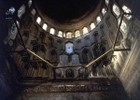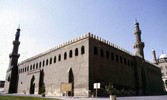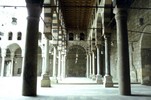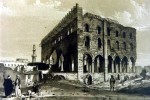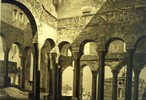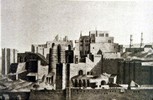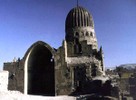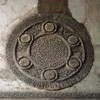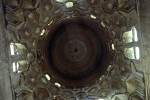Previous Lecture | Next Lecture
Concepts
Al-Nasir Muhammad: (1293-1341 with two interruptions) The most important of the Mamluk sultans. Cairo more than doubled in size during his long reign. He dug a new canal (al-khalij al-Nasiri), and developed with his amirs the areas around it and along the new shore of the receding Nile. He also monumentalized the Citadel and redefined its relationship to the city by surrounding it with new urban areas to the south, east, and west.
Khanqah: Establishment for sufis which usually contains a mosque, quarters for a number of sufis, and a meeting hall where the hudur (act of devotion) is performed.
Waqf: Endowment deed. In the Mamluk period, amirs and dignitaries endowed charitable structures both for pious reasons and as a means to preserve some of the wealth given them by the state in the form of iqta`, which would otherwise be taken from them.
The Madrasa of Sultan al-Nasir Muhammad: (1295-1303) Adjacent to the complex of Qalawun, this four-iwan madrasa is famous for its portal, a spoil of war from a Gothic church in Acre, its square minaret which is totally covered with stucco decoration, and its Persianized stucco-decorated mihrab.
The Madrasa-Qubba-Khanqah of Amirs Salar and Sanjar: (1304-5) Tucked in a bent of a major thoroughfare, this double-domed complex dominate the approach from the mosque of Ibn Tulun. It has the tombs of two amirs and a madrasa-khanqah next to them.
The Mosque of Sultan al-Nasir Muhammad at the Citadel: (1318 and 1335) The main mosque at the Citadel, this hypostyle structure is distinguished by the arrangement of alternate courses of red and black stone in its arches and niches, and by its two unusual minarets which may have been a direct import from Ilkhanid Iran.
The Great Iwan at the Citadel: Rebuilt twice by al-Nasir Muhammad, in 1315 and 1334, on the site of earlier iwans, it served as the formal audience hall. It consisted of a huge basilical space made of rows of reused granite columns, was opened on three sides, and was covered with a dome coated with greenish faience.
The Khanqah-Qubba of Princess Tughay: (1348) One of the earliest structures in the Northern Qarafa, this ruined structure is the tomb of the favorite wife of al-Nasir Muhammad and the mother of his favorite son Anuk. It shows many eastern influences in its decoration.
Monuments






